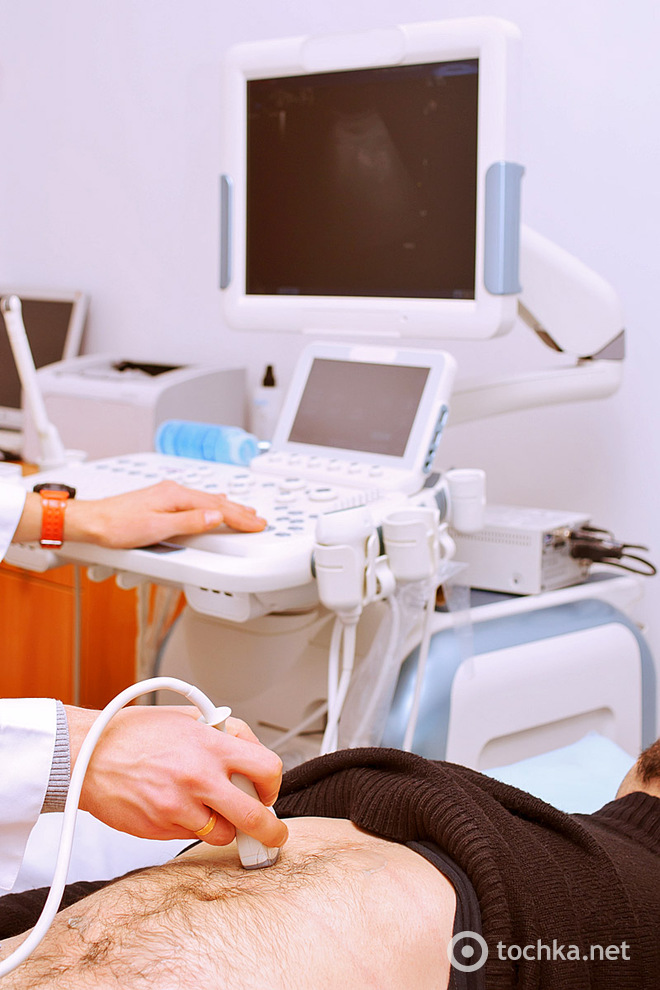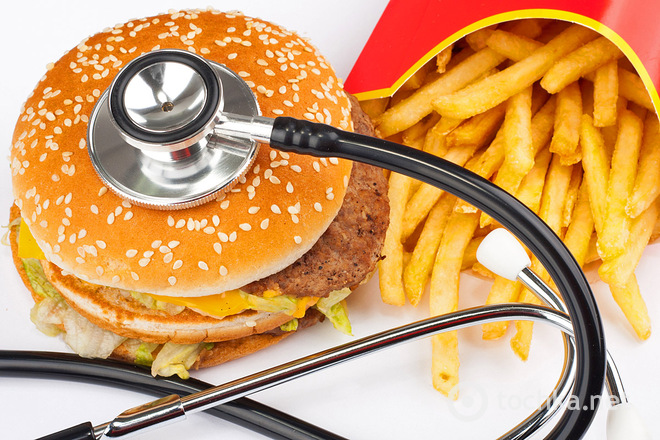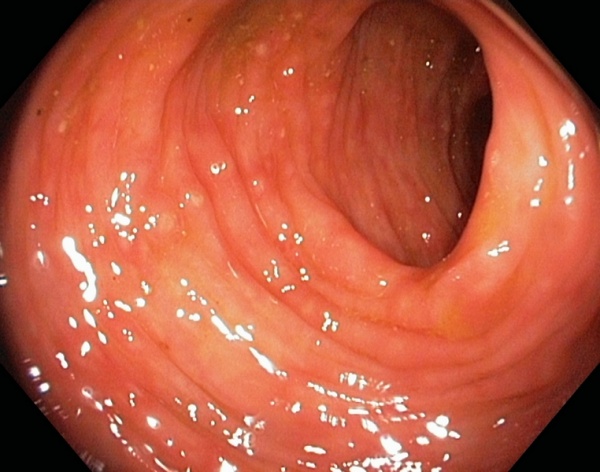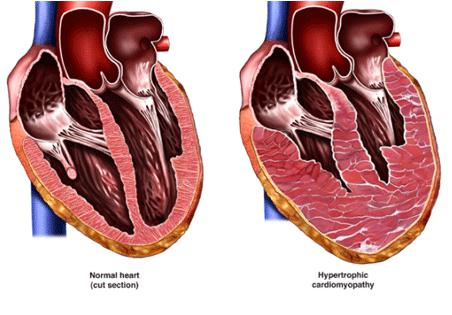Causes, signs and treatment of gastric erosion
Erosion of the stomach (erosio from lat. - corrosive)- a disease in which a superficial defect of the cells of the mucous membrane of the organ is formed without damage to the muscle tissues of the stomach and does not leave scars after healing. The frequency of the disease is about 15% of patients who have undergone examination of the organs of the gastrointestinal tract.
Outwardly, erosion looks like an ulcer 0.3-15 mm in diameter, round or irregular in shape, can form in any part of the stomach. Some doctors consider erosion a pre-ulcer disease, others - an independent disease.
Causes of erosion of the stomach

The causes of the development of the disease are not well understood. There is an opinion that the cells of the gastric mucosa under the influence of various factors experience oxygen "starvation" (ischemia), as a result of which in some parts of the stomach wall there is a violation of their work, which makes it impossible for cell membranes to pass through vital chemical compounds.
Cells of the immune system - leukocytes - gather at the site of the violation, there is an increased production of hydrochloric acid, digestive pepsin - all this in combination, as well as the genetic predisposition of the body, lead to the development of autoimmune processes with the formation of defective cells and chronicity of the disease.
The occurrence of erosions can also be a consequence of the inhibition of the regenerative function of the epithelium, and not the aggression of gastric juice.
Risk factors:
- consequences of injuries;
- sepsis;
- consequences of operations of the digestive tract;
- burns;
- stress;
- smoking;
- long-term use of non-steroidal anti-inflammatory drugs;
- mucosal burn as a result of drinking alcohol, spicy and hot food (alcohol is dangerous as a provocateur of the development of diseases of the liver and other organs that contribute to the appearance of erosion);
- long-term poisoning with salts of heavy metals, nicotine, alkali and acid;
- chronic diseases of the gastrointestinal tract (pancreatitis, liver failure, cholecystitis);
- metabolic disorders, diabetes;
- heart failure;
- chronic diseases of the respiratory system, causing oxygen starvation and decreased immunity;
- malignant neoplasms of the stomach and intestines.
According to one theory, the main cause of erosions is the vital activity of Helicobacter pylori bacteria in the stomach. This is proved by the presence of antibodies to the infection in the blood in more than 90% of the identified patients.
Sometimes erosive defects in the stomach appear simultaneously with benign and malignant tumors, inflammatory diseases of the intestines, liver, lungs, and with diseases of the blood and heart.
Diseases such as thrombosis or stagnation of blood in the portal vein are often accompanied by erosive gastritis. A hernia of the esophageal opening of the diaphragm can also be complicated by hemorrhagic erosions localized near it.
Types of disease:
- primary erosive defect (pathology of the organ itself);
- secondary erosion (as concomitant with heart or liver failure, etc.);
- malignant form of erosion (with cancer or Crohn's disease).
According to another classification, acute and chronic, multiple (over 3 damaged areas in different places) and single (from one to three) are distinguished. The defeat of the surface of the entire stomach or a significant part of it is called hemorrhagic (with hemorrhage and polyps) gastritis.
The duration of the disease is directly related to its type, so, in the acute form of erosion, defects are localized in the bottom and body of the organ, epithelialization (healing) of the surface takes an average of 10 days. In severe cases - up to 8 weeks. The chronic form can exist up to 5 years. It is located at the exit from the stomach in the form of groups of wounds and ulcers arranged randomly or in the form of a chain with a diameter of up to 5 mm. When gastric erosion is combined with duodenal erosion, periodic bleeding often occurs.
Symptoms and signs of erosion of the stomach
The manifestation and severity of symptoms and the type of clinical manifestations will depend on the place of occurrence of erosion of the stomach.
Erosion of the antrum leads to pain in the center of the abdomen, defects in the body of the stomach - to pain in the left hypochondrium.
Symptoms of the disease can be divided into two groups according to the main features - hemorrhagic and ulcer-like manifestations. Ulcer-like symptoms appear at any stage of gastric erosion:
- pain after eating;
- from time to time pain on an "empty stomach";
- frequent heartburn;
- nausea, belching of air.
Hemorrhagic (caused by bleeding) symptoms:
- dark stools due to bleeding from the defect;
- there is vomiting with blood;
- drop in hemoglobin, anemia;
- weakness, poor performance.
As a rule, the acute form of erosive gastritis ends with rapid (5-15 days) epithelialization of erosions. After healing, they do not leave any diagnosable traces on the gastric mucosa.
- READ:
Erosions characterized by proliferation of mucosal cells (hyperplastic) often become chronic and can exist for several years, and then disappear. Some erosions of this type exist for a very long time, aggravating as irritating factors influence and living again.
Diagnosis of erosion of the stomach

The main method for diagnosing gastric erosions, determining their variety and location, as well as excluding the malignancy of the process, is gastrophagoduodenoscopy with targeted biopsy (taking a piece of tissue for examination)
Often, in addition to this type of study, the doctor prescribes a fecal occult blood test, the detection of anemia in general clinical tests, and no visible deformities or tumors are noted on x-ray examination of the stomach.
In elderly patients, as well as with a long non-healing of benign erosion, an increase in its size, a colonoscopy of the colon, ultrasound or tomography of the abdominal organs is mandatory.
It is important to establish exactly that this is not a stomach ulcer, cancer, lymphomatosis or hyperplastic polyps of the mucous membrane.
Treatment of erosion of the stomach
First stage of treatment- elimination of the cause of gastritis. If the disease is caused by the bacteria Helicobacter pylori, then the treatment of chronic erosive gastritis is impossible without the use of antibiotics. Most often, the patient is prescribed drugs tetracycline, levofloxacin, clarithromycin, amoxicillin, which require long-term administration. If the course of antibiotics is interrupted, then Helicobacter pylori very actively renews its colony in the stomach.
Second stage of treatment- normalization of the acidity of gastric juice. The gastric mucosa, affected by erosion, should be protected from the aggressive effects of gastric juice, sometimes even a correction of its chemical composition is required. The patient is prescribed antacids and acid blockers - Rennie, Maalox, Almagel, magnesium hydroxide, nizatidine and others. And although all these drugs belong to the group of antacids, each of the drugs has its own mechanism of action. Therefore, you should not replace one medicine with another without consulting a doctor.
- READ:
Since antacids suppress the action of gastric juice, additional enzymes are required for better digestion of food. Strengthen the secretory function of drugs Mezim, Digestal. Also at this stage of treatment, the doctor may prescribe antispasmodic drugs to the patient to eliminate stomach pain - Papaverine, No-shpa.
Third stage of treatment- restoration of the gastric mucosa. Iberogast, Trental drugs do an excellent job with this task - they increase the supply of oxygen to the affected tissues and regeneration occurs faster.
Therapeutic nutrition for erosion of the stomach
An important part of the treatment of the disease is therapeutic nutrition for erosion of the stomach. The basic principle of the diet for erosion of the stomach is the absence of mechanical, thermal and chemical irritants of the mucous membrane of the organ.
This means that in clinical nutrition for erosion of the stomach, it is strictly forbidden: radishes, sinewy meat, muesli, bran bread and other foods with coarse fiber and fibers, fried foods, alcohol, carbonated drinks, citrus juices, coffee, strong meat broth, cold and hot food.

Mandatory elements of the diet for erosion of the stomach are dairy products: milk, low-fat sour cream, butter, hard low-fat cheese. It is believed that these products contribute to the production of enzymes that accelerate the regenerative processes in the gastric mucosa. And therefore, their active use in nutrition with erosion of the stomach is an important condition for the rapid healing of the mucosa. The recommended diet for gastric erosion is 4-6 times a day in small portions. Dishes for a diet with erosion of the stomach are recommended to be boiled or steamed. Traditional diet dishes for gastric erosion are steam cutlets, oatmeal, soft-boiled eggs, semolina, jelly, mucous soups.
Prevention of gastric erosion
A healthy lifestyle and the rejection of bad habits is another component of the successful treatment of erosive gastritis. Even after recovery, it is recommended to exclude alcohol - because it corrodes the gastric mucosa, alcohol on an empty stomach is especially harmful. Smoking is also undesirable - nicotine provokes vasoconstriction, so the stomach is not sufficiently supplied with blood.
- Intercostal neuralgia - what is it and how to treat
- How to quickly get rid of dry corns on the legs
- How to treat left ventricular hypertrophy
- Rating of the best drugs for rotavirus for children
- Making tea from currant leaves, the benefits and harms of the drink
- How to drink hydrogen peroxide according to Neumyvakin - an oral regimen
- Features of the treatment of plantar fasciitis with folk remedies
- The composition and beneficial properties of parsley root
- How to get pregnant quickly? Folk remedies
- Herbs-ants in the "pot-bellied" period or the use of herbal medicine during pregnancy
- Why does a sore throat and dry cough occur, and what treatment is required?
- Guy's Room Design: Ideas and Examples
- General rules for drawing up a foundation plan House foundation drawings
- modern art deco bedroom small art deco bedroom
- Pansies: characteristics and photos of flowers
- Making an art deco bedroom: the choice of materials Beige art deco bedroom
- Bedroom interiors in art deco style Bedroom art deco style beige
- Young: planting and care in the open field Young planting and care in the open
- Varieties for open ground
- Pansies: cultivation and care in the open field









